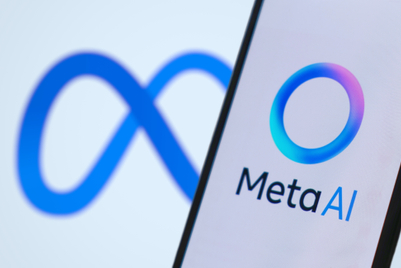
Disney announced a range of new products and tech partnerships aimed at improving the interoperability of its products and increasing shopability at its tech and data showcase last week, held for the first time during the Consumer Electronics Show.
Infusing commerce into the streaming experience was a prominent area of investment. Disney has evolved its first commerce-focused ad product GatewayGo, which was launched as a Hulu product in 2020, into Gateway Shop, which enables advertisers to send consumers personalised prompts for products via a QR code, a mobile push notification or an email without disrupting the viewing experience. Unilever is among the beta advertisers.

Gateway Shop will evolve into a carousel showcasing products from the films and TV shows viewers are watching, to be called Shop the Stream.

Disney has also amped up its measurement capabilities. New measurement dashboards across Disney’s streaming platforms will include metrics such as ad recall, consideration, purchase intent and favorability, powered by a partnership with Cint’s Lucid Impact Measurement, as well as real-time creative optimisation capabilities, powered by Innovid.
Advertisers will soon be able to optimise their creative to a “moment or mood” via the company’s new Magic Words technology, which analyses scenes and visuals across its content library to identify contextual moments. The product will be available to beta partners at Disney’s upfront in May and to wider audiences by the end of year.
More automation is coming to Disney’s self-serve business, Disney Campaign Manager, including an automated creative tool for brands to optimise creative for streaming. Disney+ and ESPN inventory will be available to be purchased self-serve for U.S. advertisers in 2024. Disney said more than 4,200 brands and 1,000 agencies have adopted its self-serve platform since it was beta launched in 2021.
On the data front, Disney’s Clean Room solution is now interoperable with Amazon Web Services’ Clean Rooms and Google Cloud’s BigQuery, and the company partnered with Habu to develop a portal that simplifies how advertisers set up a clean room. Disney called it a “first step toward a self-service clean room.”
Ramping up its self-serve capabilities forms part of Disney’s strategy to simplify the ad tech supply chain and reduce fees for advertisers, Josh Mattison, SVP of revenue management and operations, said in an interview with Campaign US.
“We’re very much [about] making this as simple as possible,” Mattison said. “You hear a lot about reducing taxes and fees that exist in the inventory ecosystem. That’s also a point of pride of being with Disney: I expect the highest quality experience, I expect you to provide the tools that I need and I want it in a transparent way with the least amount of costs along the way.”
Disney is also further integrating Disney+ and Hulu, including a bundled service in the Disney+ app rolling out by March. A marketing campaign will roll out in the same month targeting both existing and new subscribers to upgrade to the bundled service.
During a press preview, Disney executives detailed the process to update Hulu’s ad server to service both Disney+ and Hulu inventory, a process that took a lot of time and resources, according to Alex Combs, VP of product management for advertising platforms.
“Hulu’s ad server was built in 2010; it was built for a startup,” said Combs. “It is a major undertaking to build your own ad server, especially when it’s going to operate at the scale that’s specific for premium streaming TV or the CTV environment.”
“We view ourselves as a technology organisation, aligned with Amazon or Google, in that respect,” said Amy Lehman, SVP of advertising platforms.
“One of the key benefits to our technology now residing under one single organisation is that we own the entire stack from the application to the video playback to everything that consumers interact with across Disney+, Hulu, ESPN, ESPN+. It allows us greater capabilities in terms of creating seamless ad experiences, personalization,” Lehman added.
Disney said its ad server processes 500 million ad impressions per day.
The company also detailed the protections it has put in place to maintain a brand safe environment for programmatic buys.
Disney only sells its inventory programmatically via private marketplace deals and an invite-only auction. There are “thousands and thousands” of advertisers in Disney’s invite-only auction, composed mainly of mid- to long-tail advertisers, said Matt Barnes, VP of programmatic sales. Every piece of creative from these advertisers is manually reviewed by a human being in order for that advertiser to be safelisted.
The company is equally “rigorous” about its ad tech partners, Barnes said. Currently, 30 demand-side platforms have been approved to buy Disney inventory.
Disney’s president of global advertising Rita Ferro shared that 50% of new subscribers to Disney+ are choosing the ad-supported tier, raising to two-thirds of new subscribers for Hulu.


.jpg&h=334&w=500&q=100&v=20250320&c=1)
.jpg&h=334&w=500&q=100&v=20250320&c=1)

.jpg&h=334&w=500&q=100&v=20250320&c=1)
.png&h=334&w=500&q=100&v=20250320&c=1)
.png&h=334&w=500&q=100&v=20250320&c=1)











.png&h=268&w=401&q=100&v=20250320&c=1)